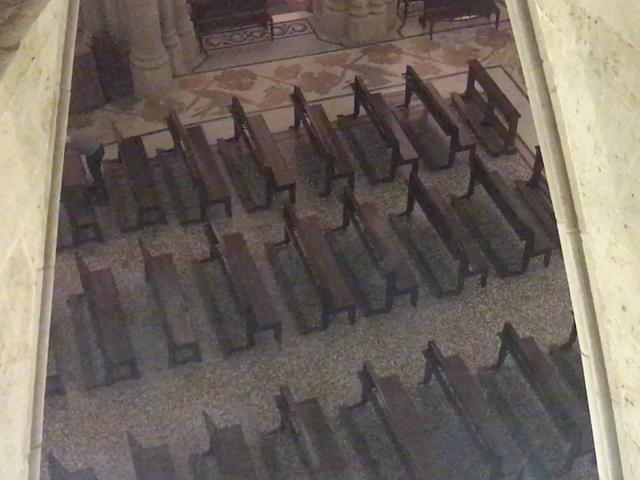Crypt

The crypt, the heart of the Sagrada Família, Gaudí's last resting place.
Let's go down to the crypt. It is an underground floor located under the apse, the first space that was opened to worship and where Gaudí's mortal remains rest.
Its original design is by the temple's main architect, Francisco de Paula del Villar, whom Gaudí replaced. Upon taking charge of the project, Gaudí adapted the design, increased the height of the vaults, changed the capitals for more flowery and vegetal ones, opened larger windows, and excavated a perimeter moat throughout the environment to improve lighting and ventilation, avoiding humidity. The most significant change was eliminating the central staircase leading down and accessing the crypt that Villar had planned, replacing it with two spiral staircases on the sides. Gaudí contributed directly to the decoration, making some of the lamps himself.
Observe its large vault, where the sculptured and polychrome image of the Annunciation of Mary by the sculptor Joan Flotats stands out.
The central altar stands out, with the altarpiece by Josep Llimona and four chapels dedicated to the Virgin of Carmen, Jesus Christ, the Virgin of Montserrat and Christ crucified.
Another of the treasures of the crypt is the floor, surrounded by a Roman mosaic with representations of vines and wheat, Mediterranean allegories and fertility, made by the mosaicist Màrius Maragliano.
The Nativity façade and this crypt are the only elements built during Gaudí's lifetime. Both elements have been part of UNESCO's World Heritage Works since 2005.
And if Gaudí is buried in the chapel on the left (that of the Virgin of Carmen), in the one on the right (dedicated to Christ Crucified) rest the remains of Josep Maria Bocabella, the philanthropist who promoted the creation of the temple and who acquired the site where the Sagrada Familia now stands.
© Tourblink